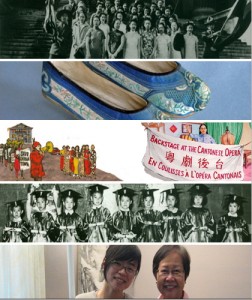The MHSO is intrigued by, and is becoming proficient in, the use of new technologies. Like many heritage organizations, it has adapted popular exhibits for virtual viewing. It has ventured far beyond this, however, and has been working for some time to make primary source materials accessible online and to develop programming specifically for web presentation. In fact, innovative programming developed specifically for web presentation has increasingly become a focus of the Society’s work. The MHSO has produced many online resources. The following multi-faceted websites are examples of its efforts.
Chinese Canadian Women 1923-1967: Inspiration – Innovation – Ingenuity
The MHSO’s trilingual (English, French, Chinese), interactive website, Chinese Canadian Women, 1923-1967: Inspiration – Innovation – Ingenuity, recognizes and commemorates Chinese Canadian women for the important roles they played during a challenging time in their community’s history, the over four decades in which Canadian immigration policy was blatantly discriminatory. Thirty-three oral history interviews were conducted in six cities (Halifax, Montreal, Toronto, Calgary, Vancouver, Victoria) and numerous archival materials were identified during the course of this nation-wide project. Over 1,000 digitized items documenting Chinese Canadian women’s history from 1923 to 1967 – interviews, historical photographs, memorabilia, documents, artwork – are accessible through the website. It also features four virtual exhibits – “The sense of where you come from”: Timeline of Chinese Canadian History; “I thought I was a Canadian, but they didn’t recognize me as Canadian”: Legislation and Its Impact; “They gave up themselves for the next generation”: The Working Lives of Chinese Canadian Women; and “One foot Canadian, one foot Chinese”: Family and Community – and two interactive ‘adventure’ activities – Explore Chinatown and Backstage at the Cantonese Opera – as well as educational resources. Opportunities are provided for community members to view, comment on, and post images and videos.
The Global Gathering Place
The Global Gathering Place website was a joint initiative of the MHSO and the Centre for Instructional Technology Development, University of Toronto Scarborough. It contains thematic sections, broadly relevant across ethnocultural communities, on the migration process, community and neighbourhood life, and human rights and global linkages. It also contains sections specific to the Chinese Canadian, Italian Canadian, and African Canadian communities with historical overviews, life stories of unique individuals, and additional readings and resources, as well as three virtual exhibits – “But Women Did Come”: 150 Years of Chinese Canadian Women in North America, Many Rivers to Cross: The African Canadian Experience, and Safe Haven: The Refugee Experience of Five Families. The website was an early attempt to use information technology to extend the MHSO’s public awareness and educational programs to a much wider audience than traditional methods of outreach allowed. It was showcased in 1999 at a conference in Montreal on teaching and learning Canadian history, and in an article in the Canadian Historical Review critiquing the new materials presented at the conference, it was praised by Peter Seixas, a Professor in the Department of Curriculum and Pedagogy, University of British Columbia and later founder of the History Education Network and the Centre for the Study of Historical Consciousness.

